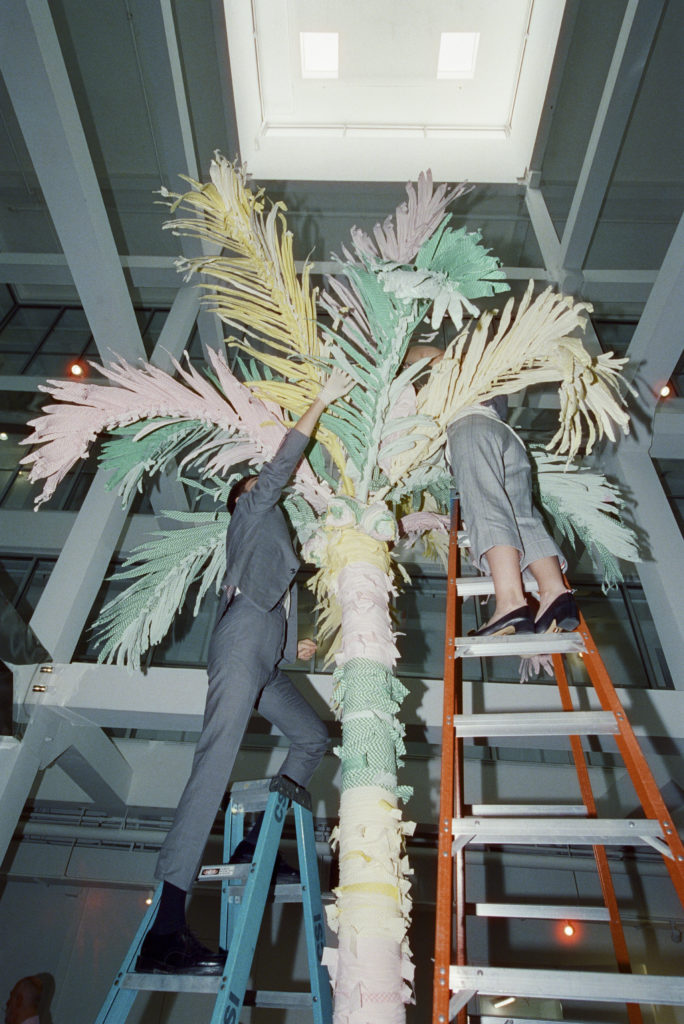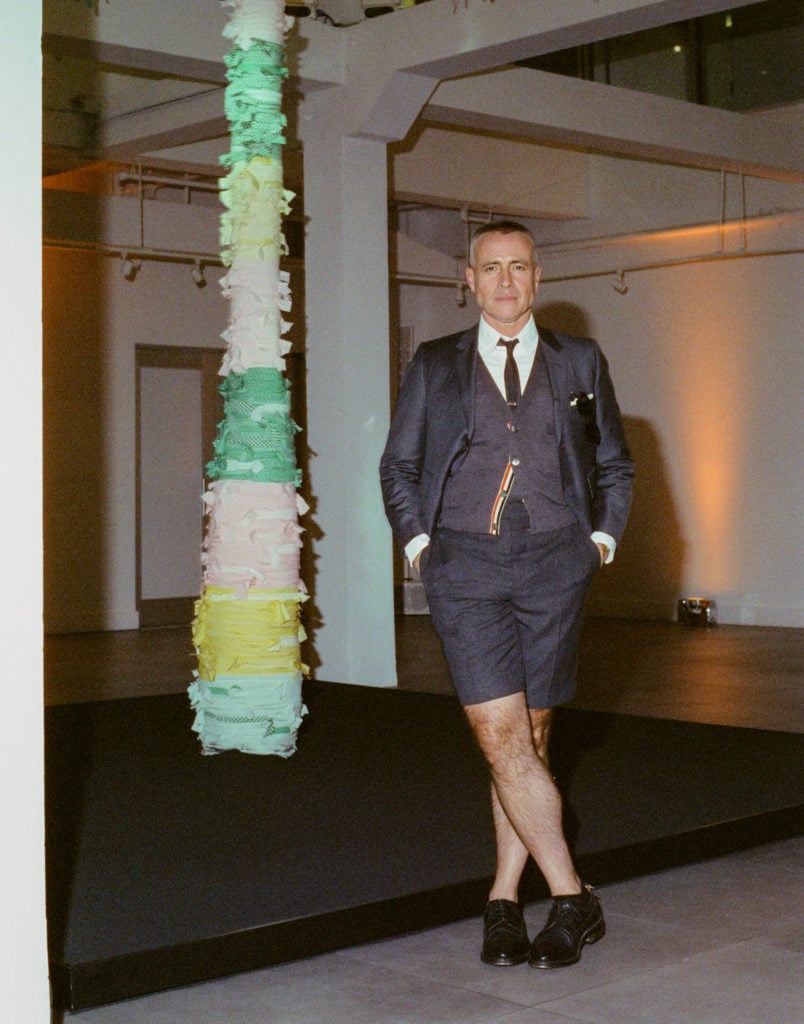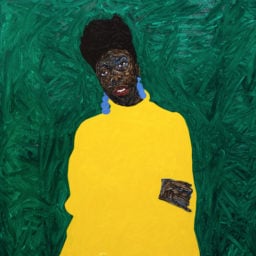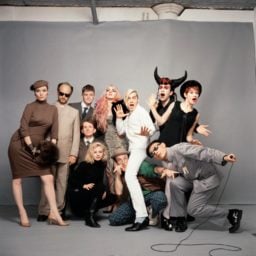Thom Browne, the designer, is an established visionary in the fashion world, acclaimed for his cropped suits and unorthodox approach to tailored separates. But Thom Browne the artist has, until now, maintained relative obscurity.
Browne has been making art on the down-low for the better part of a decade. He paints minimalist compositions inspired by Pointillist techniques, and counts giants of 20th-century American painting—from Milton Avery to Andrew Wyeth to Edward Hopper—as influences. Browne has also dabbled in sculpture, integrating those works over the years into fashion runway shows that are more like full-blown thespian extravaganzas than industry events.
After keeping his fine-art practice more or less under wraps for years, Browne is finally stepping out with his first-ever public artwork: a 21-foot-tall likeness of a palm tree that will go on view in Miami’s Moore Building come December 5, when Art Basel Miami Beach opens to the public.
The palm tree, of course, is a familiar icon associated with Miami and, more broadly, the idea of stress-free beach getaways. Browne outfitted his tree’s trunk and fronds with summery scraps of his signature pastel-hued seersucker, gingham, and pincord fabrics. He anchored the monolith, which is situated beneath a mirrored panel, in a black sand base. The juxtaposition is intentionally jarring.
“My artistic practice is really grounded in exploring tensions,” Browne tells Artnet News. “I always start by closing my eyes and thinking of an idea that is complicated and [that] provokes me, and thus has the potential to compel another person.” With Palm Tree I, he says, he’s digging into “the tension between work and rest, and their relationship to our inflated notions of the ‘American Dream.’”
Within the conceptual space of fashion, Browne has long sought to capture the mundanity and repetition of corporate culture in the United States. His models have toiled behind mid-century typewriters on a Florentine runway; they’ve been reflected to infinity within a mirrored office set-up on the New York Fashion Week stage; and they’ve assembled amongst a grid of vintage desks for a choreographed performance piece at Design Miami/ Basel, where Browne was the first fashion designer to create an installation for the fair’s Large platform.

The making of Thom Browne’s Palm Tree I (2019). Photo: Emma Louise Swanson. Courtesy of the artist.
All of this is in addition to Browne’s primary occupation as a suit designer. While he creates with the contemporary professional in mind, his avant-garde silhouettes defy the conventions of classic business attire.
“All this time, Thom has been…upending rigid gender assumptions, exploring uniformity and individuality, and investigating the monotony of everyday life,’” says the project’s curator, Deana Haggag, who is also the president and CEO of the nonprofit United States Artists. “We’ve become accustomed to reckoning with some of these tensions, but Thom has been consistently and meticulously considering them for years. I think it’s tremendous that we finally get to see him expand fully into this artistic dimension of his making practice.”
Browne began making art at around the same that he began designing clothes. “Of course, [art and fashion] complement one another,” says Browne. “But in many ways, they feel like different methods for me to explore and investigate my interests and the world around me.” (He also now has a curator in the family: his partner, Andrew Bolton, is the curator in charge of the Costume Institute at the Metropolitan Museum of Art.)
Painting, Browne says, is the medium that currently interests him the most, but performance remains his bread and butter. While Palm Tree I doesn’t move, Browne considers the sculpture to be a performative artwork, “in the way that it invites the viewer to interact with the piece and the environment made for it through the sandpit and mirror,” he explains.
“I see this sculpture as an extension of the fantastical staging and rigorous use of Americana iconography that have come to underpin his career,” Haggag says. “It’s just another vernacular by which Browne gets to explore his curiosities, and deepen the traditions he is already steeped in, like craft and performance.”
Palm Tree I will be on view from December 5 until January 20 at the Moore Building in Miami’s Design District. From 6 p.m. to 8 p.m. on December 5, David Velasco, the editor-in-chief of Artforum, will host a panel discussion about the artwork with Browne and Haggag on site in the Moore Atrium.
Follow Artnet News on Facebook:
Want to stay ahead of the art world? Subscribe to our newsletter to get the breaking news, eye-opening interviews, and incisive critical takes that drive the conversation forward.








